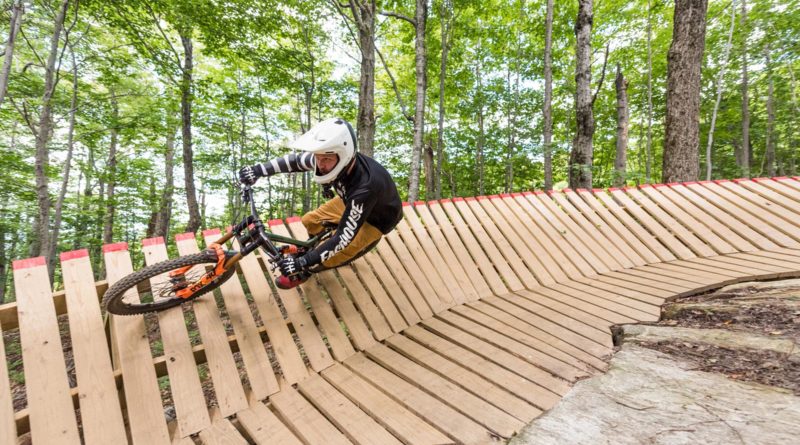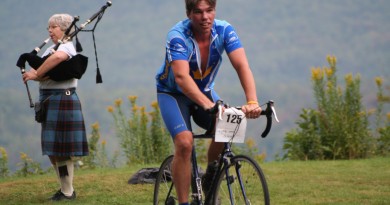How Mountain Biking Changed Vermont: VMBA’s 25 Years
Author John Atkinson was one of the early leaders in Vermont’s mountain biking scene and ran the Mad River Riders for nearly two decades before recently signing on with Bolton Valley Resort to help build their mountain bike programs. Here’s his tribute to the Vermont Mountain Bike Association’s 25 years. Related, we interviewed three past VMBA Executive Directors on what made their tenures stand out. See “Three People Who Changed VMBA.” [Opening photo: Zeke Neubauer at Burke Mountain Resort, photo by Ali Kaukas]
My first mountain bike ride in Vermont was in September 1992. I had just moved to Warren and a new friend took me to Eurich Pond. We climbed what is now Powerline to Techie and back out to Sugar Run. I was riding a Bridgestone MB-6, basically a glorified road bike with knobby tires. The pitchy headtube angle, 26” wheels, narrow bars, center-pull brakes and tall seatpost inspired very little confidence. The loop was less than 5 miles, but I was gassed by the end and walked more than a few of the steeper sections.
The ride was fun and challenging enough that I wanted more and by the next spring, I had a job at the Mad River Bike Shop, building new bikes, fixing broken ones and helping build trails.
While folks have been riding bikes in the woods of Vermont ever since two-wheeled transport was invented, the modern era of mountain biking got rolling in the 1980’s. Riding mountain bikes back then was a little like going to Phish shows in the same time frame. Everything was clunky and dorky, the mountain biking community was small and exclusive, access to venues and terrain was limited.
But there was also a feeling that something bigger and better was just over the horizon. Fun was had, although we might classify it as Type III fun in retrospect.
The first routes ridden with knobbies were generally Class 4, power line, logging and farm roads, cross-country ski trails and lower angle hiking trails. Trails built with bikes in mind began to appear in the early 1990s, generally in recreation-friendly areas like the ski towns of Ascutney, Stowe and the Mad River Valley. They were almost always high-level expert routes.
Mount Snow was a very early adopter of lift-served riding, and by the early 1990s was hosting the Grundig World Cup Cross-Country events. Soon, other ski resorts began to add trails and offer summer lift-served access.
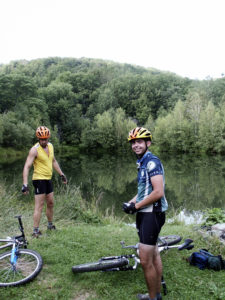
As bikes became more prevalent and mountain bike trails appeared, a few forward-thinking folks understood that access was vital. Gary Kessler, who co-founded the Mad River Riders in 1986, explains: “We realized pretty early on that if we couldn’t get access to public and private land, we were never going to have trails.”
As a lawyer, Kessler’s professional experiences helped lead him to write and lobby for the Landowner Liability Protection Act, which passed in 1998 and has proven to be a key component in how trail networks develop in Vermont.
The act protects landowners who allow the public to use their land from personal injury lawsuits, as long as there is no fee charged for access.
This has encouraged a more European style of land-sharing and more open access to private land than many of other states enjoy. Without this legislation, there would likely be many fewer trails in the state. Every access conversation with a private landowner in Vermont references this legislation. It’s that important.
While the legislation was vital, the early days included a fair amount of ignorance of access issues. Riders often snuck around posted signs and built rogue trails with no permission from public or private landowners. Most of it didn’t feel rogue, it was just fun to build and ride. I was as guilty of these things as anyone in the community.
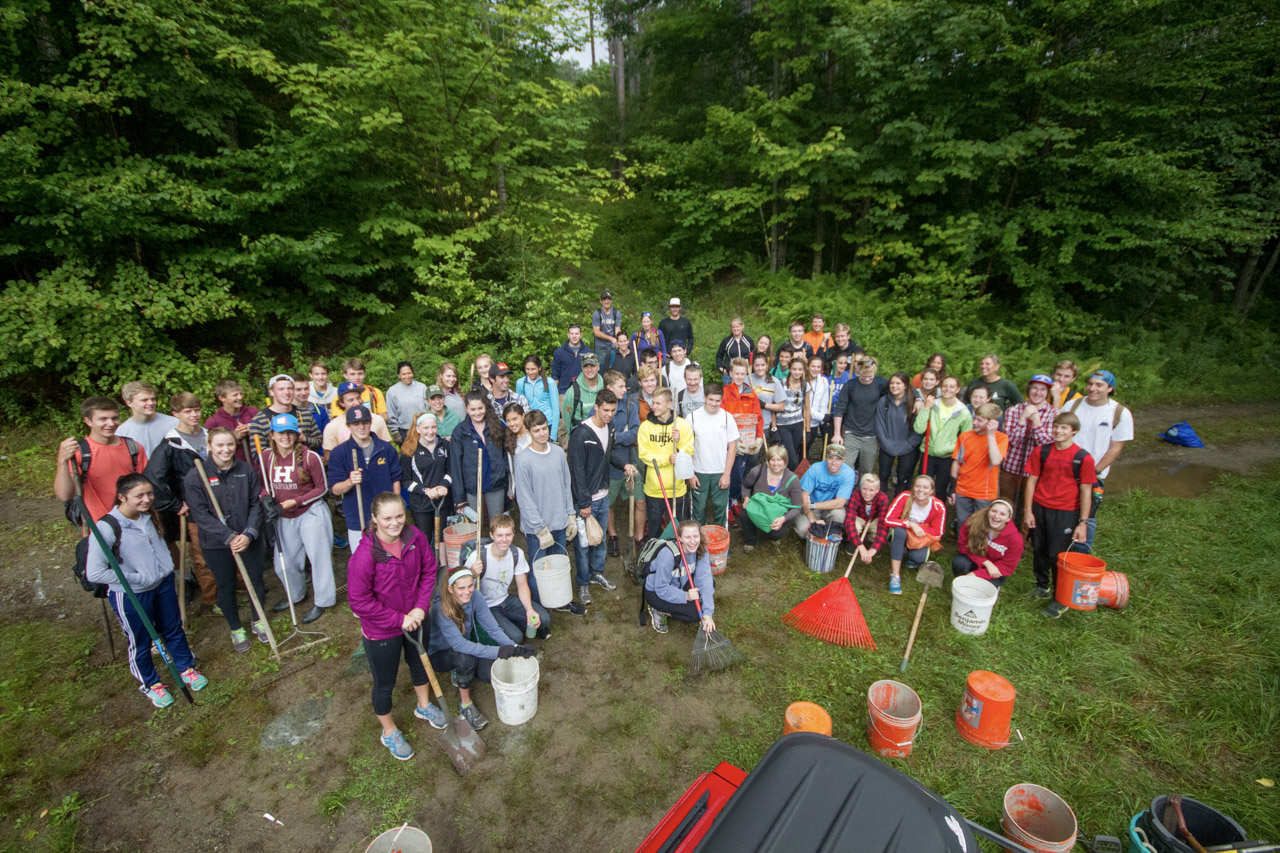
The mid ‘90s saw a lot of rapid growth, with bike shops popping up in most towns and semi-secret networks. Randolph was one of the first areas to go full legit and publish maps, helping lead to one of New England’s first big mountain bike festivals, with Pedro’s as the title sponsor.
With a big (for then) network of 40 miles, some of it even mellow enough for normal humans to ride, Randolph was sold as the up and coming “Moab of the East.” The fests drew thousands who camped out for the weekend. The festivals were fun, with group rides, demos, fun races, food, beverages, and lots of dogs, music and tents. These events set the tone for almost every bike fest in Vermont since then.
But the Moab-thing did not pan out for Randolph – at least not then.
The other area that began to work with private landowners and share trails publicly early on was Kingdom Trails, which did end up becoming a destination similar to Moab. My first rides in the Kingdom were in the mid 90’s and the whole scene blew my mind even then.
We would pull into East Burke Sports, buy a ticket, get a map and then John Worth, owner of East Burke Sports and founder of Kingdom Trails Association, would pull out his pen and add the new trails that had been built since the map was printed. The vibe in town was overtly bike-friendly and everyone seemed in on the game, even if they didn’t ride.
As the fun drew more attention and Vermont’s mountain bike community ballooned, Kate Carter (founding editor of Vermont Sports), Dave Tremblay (another Mad River Rider) and Gary Kessler realized that the few individual bike clubs and associations in existence at the time weren’t going to be able to effectively lobby federal, state, town and private landowners on their own.
This led to the start of the Vermont Mountain Bike Advocates in 1997, the original name of VMBA. The first meetings and boards included Carter and Kessler, folks from Putney and the West Hill Shop, Green Mountain Bicycle Club, Randolph/Rochester area representatives, and some Mad River Riders like me, Geoff Wade and Eric Sharnberg.
It was a time of mostly unplanned growth, done largely without official permission. With increasing scrutiny, there were bound to be challenges. VMBA had been building relationships for a few years with the Vermont Department of Forests, Parks and Recreation (VT-FPR) and the US Forest Service (USFS), but for what was considered a “new use” and subject to a lot of review, not much had happened. Institutional inertia was not in our favor either: at that time, VT-FPR didn’t even have employees who were dedicated to recreation management.
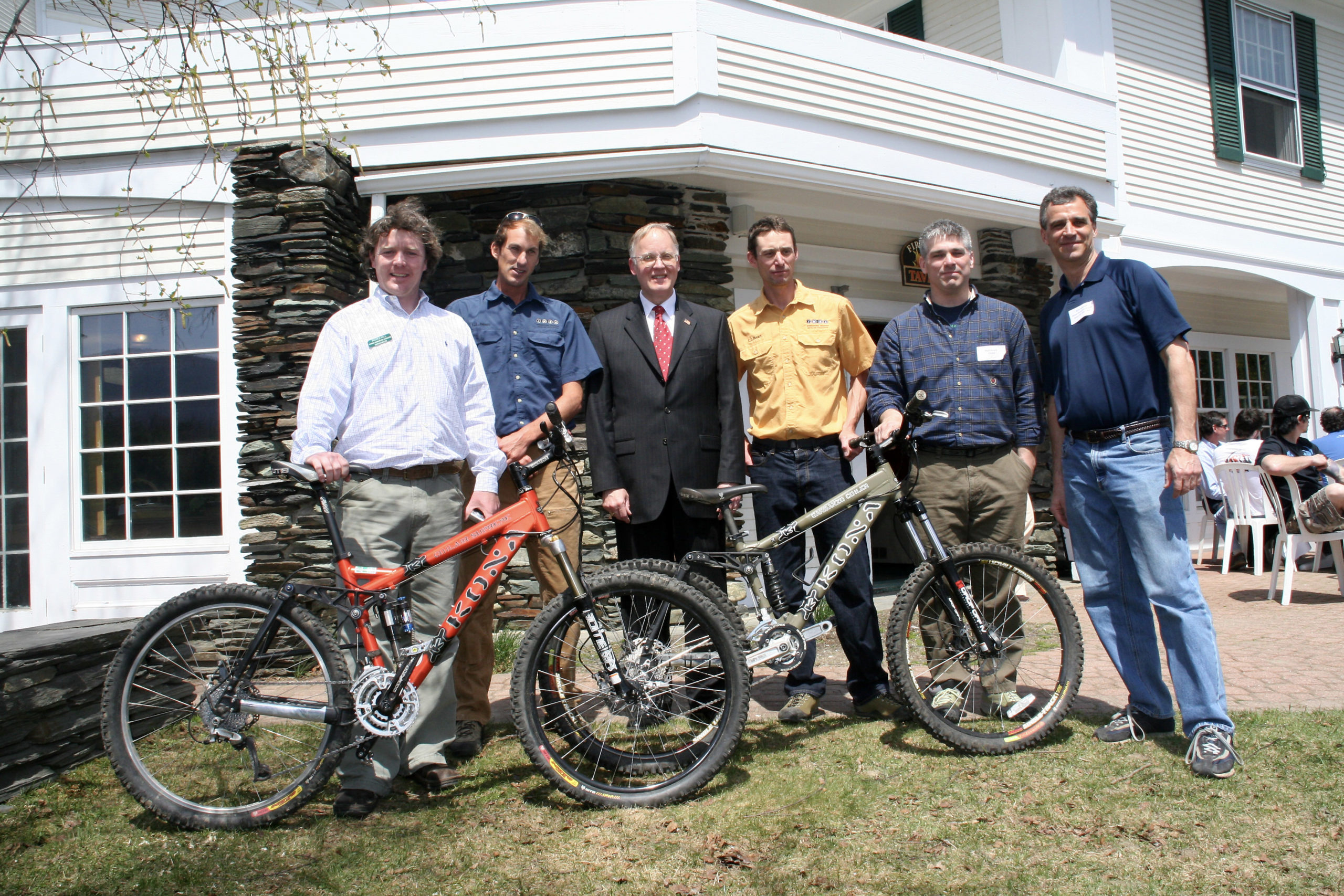
This changed in 1999 when VT-FPR discovered unofficial trails being scratched in by hand in Fayston’s Phen Basin, part of Camel’s Hump State Park. VT-FPR fixed the “problem” by paying a contractor to dig dozens of deep pits and drop over a hundred trees along the pre-existing Hemlock Hill trail, which led to the unofficial trails, in an effort to permanently close them all. After a public outcry VT-FPR established the Phen Basin Advisory Committee to discuss the possible inclusion of multi-use trails in the management plan. In 2002, this lead to the first official bike-accessible trails on Vermont state lands.
The success in Phen Basin led to efforts to protect the existing rogue networks at Perry Hill and Howe Block-Camel’s Hump State Forest, both on state lands. Both had unplanned but well-loved, intermediate and expert trails such as Rastaman, Joe’s, Burning Spear, Enchanted Forest, Cyclone, Clinic and GS.
These trails were built without permission and without input from VT-FPR. However, with a few seasons of good faith work in Phen Basin and lots of relationship-building between VMBA, Stowe Mountain Bike Club, the Mad River Riders and VT-FPR, the two networks were recognized as multi-use bike trails in 2006.
Key figures in this process included Rick Sokoloff and Hardy Avery from Stowe Mountain Bike Club, Matt Swartz who was VMBA board president, Patrick Kell, VMBA’s executive director and Gary Kessler of the Mad River Riders. Hans Jenny helped start the Fellowship of the Wheel in the late 1990’s and was instrumental in this key period of VMBA’s evolution too.
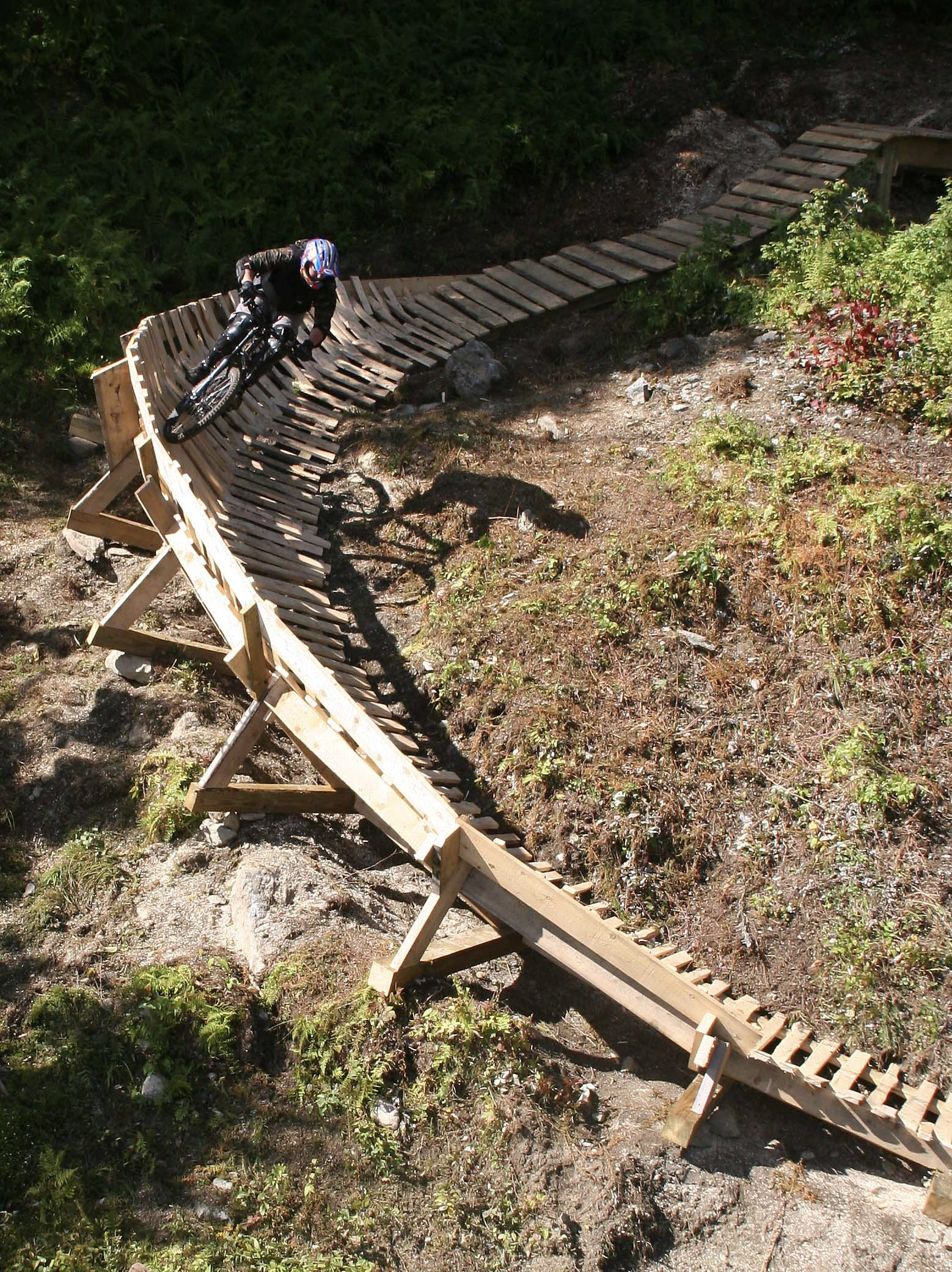
Kell also brought Gravity Logic (the folks behind the bike parks at Canada’s Whistler-Blackcomb, Trestle, Killington, etc.) to Vermont for a few years to guide ski areas through the process of starting lift-served programs. Fortunately, almost everything they shared about trail building applied to our non-lift-served networks too and these conferences were instrumental in educating many folks in our community.
With increasing legitimacy and a solid landowner-friendly framework, VMBA’s chapters (and other groups like Kingdom Trails, now part of VMBA too) were able to forge partnerships with many landowners and land managers, often connecting a wide mix of public and private properties. This created momentum for new chapters to form and when Tom Stuessy took over for Patrick Kell as executive director in 2012, the stage was set for success.
Some of Stuessy’s most important initiatives were the chapter membership model and member benefits, which centralized membership processing for all chapters, created the add-on chapter system and provided attractive incentives like day tickets to the lift-served areas in Vermont. This step helped build a more stable financial foundation for the VMBA home office and the chapters through much stronger membership, which is likely to top 10,000 in 2022. The add-on model has proven particularly effective at community-building and capturing support from a wide cross section of participants.
AS VMBA and the chapters were figuring out the logistics and relationships, they also jumped deep into trail permitting, design, building and funding, leading to the first true beginner and intermediate trails outside of places such as the Kingdom and Catamount Family Center. This allowed many more people to access mountain biking and progress into the sport. It also added popular, easier hiking routes, as bike trails are multi-use trails.
The Contest Trail in Rochester, built in the early 1990s, was the first bike trail in the Green Mountain National Forest. It took until 2012 for the next routes to get built, but once the gates opened, working with the U.S. Forest Service has been another major boost for bike trails. The Blueberry Lake network in Warren was started in 2012 and opened in 2013, with several key additions since then. The Rochester Outdoor Collective chapter currently has the most miles in the GMNF and more are being added right now.
Part of this work involves creating long-distance connections as part of the Velomont Trail, a trail that when completed will link existing networks from the Massachusetts border up to the Canadian border. The Velomont aims to connect as many of the VMBA chapter communities and networks as possible with links to backcountry huts and spurs to downtown villages along the way, similar to what can be found in many European mountain towns.
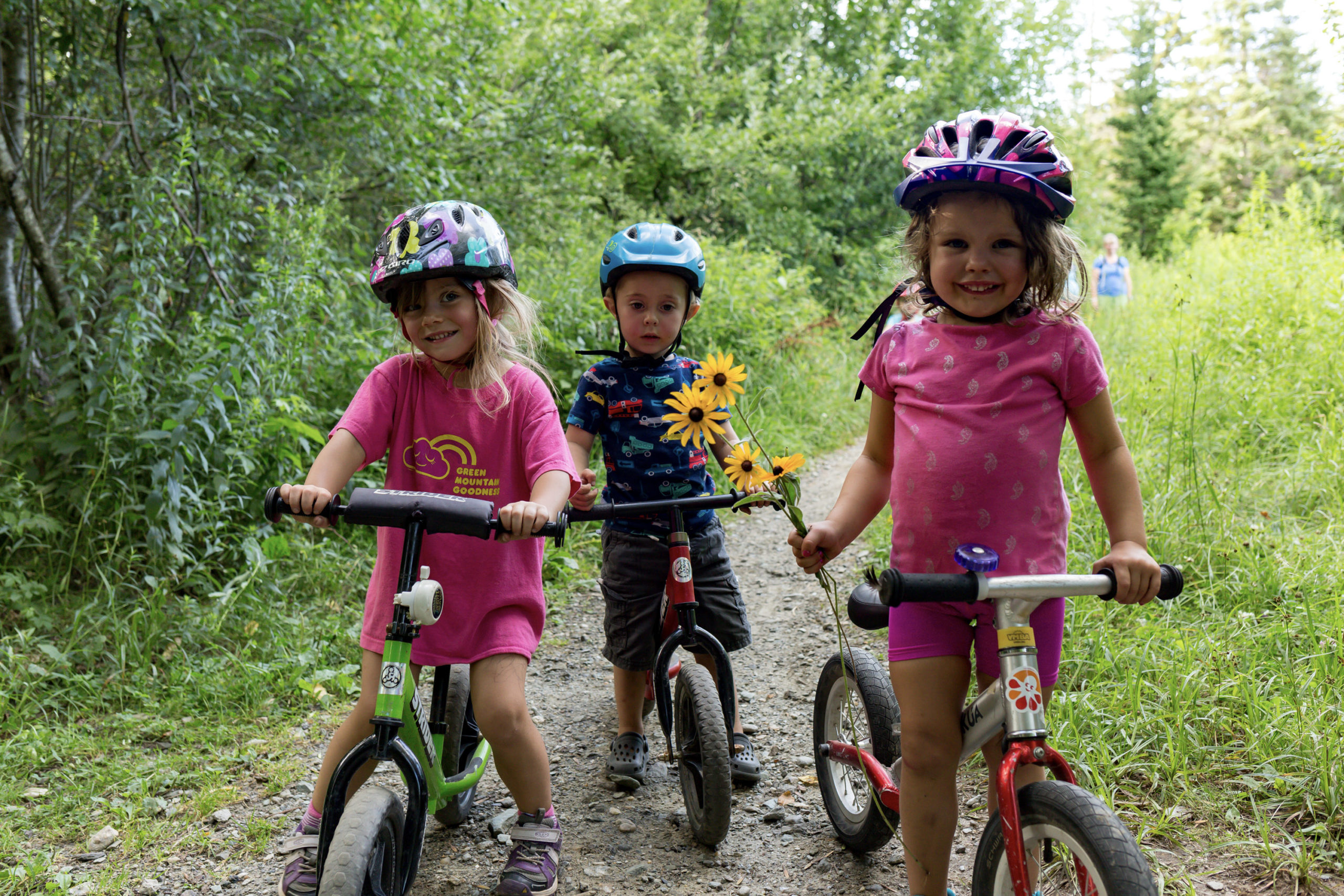
Thanks to Vermont’s well-established landowner/land manager framework, institutional knowledge about how to best plan, design, permit, fund, build and steward trails and a membership platform that benefits the chapters and the administration, the last ten years have been the most productive in VMBA’s history. Looking at the wider region and even at the national level, VMBA’s successes are noteworthy, with more members per capita than any other state, a strong foundation of grassroots organizations in 30 chapters that contribute massive yearly volunteer efforts and share over 1,400 miles of public access multi-use trails with everyone.
The fact that all this has been accomplished in 25 short years makes the work that much more remarkable. It took the Green Mountain Club over a century to get to a similar number of members. The initial Long Trail system design and build were also done with a lot less regulation and planning. VMBA continues to lead the way for high quality, low-impact, sustainable biking and multi-use trails in VT. Please remember to join and support VMBA if you bike, hike, run, ski or snowshoe on the trails. Here’s to another 25 years.

